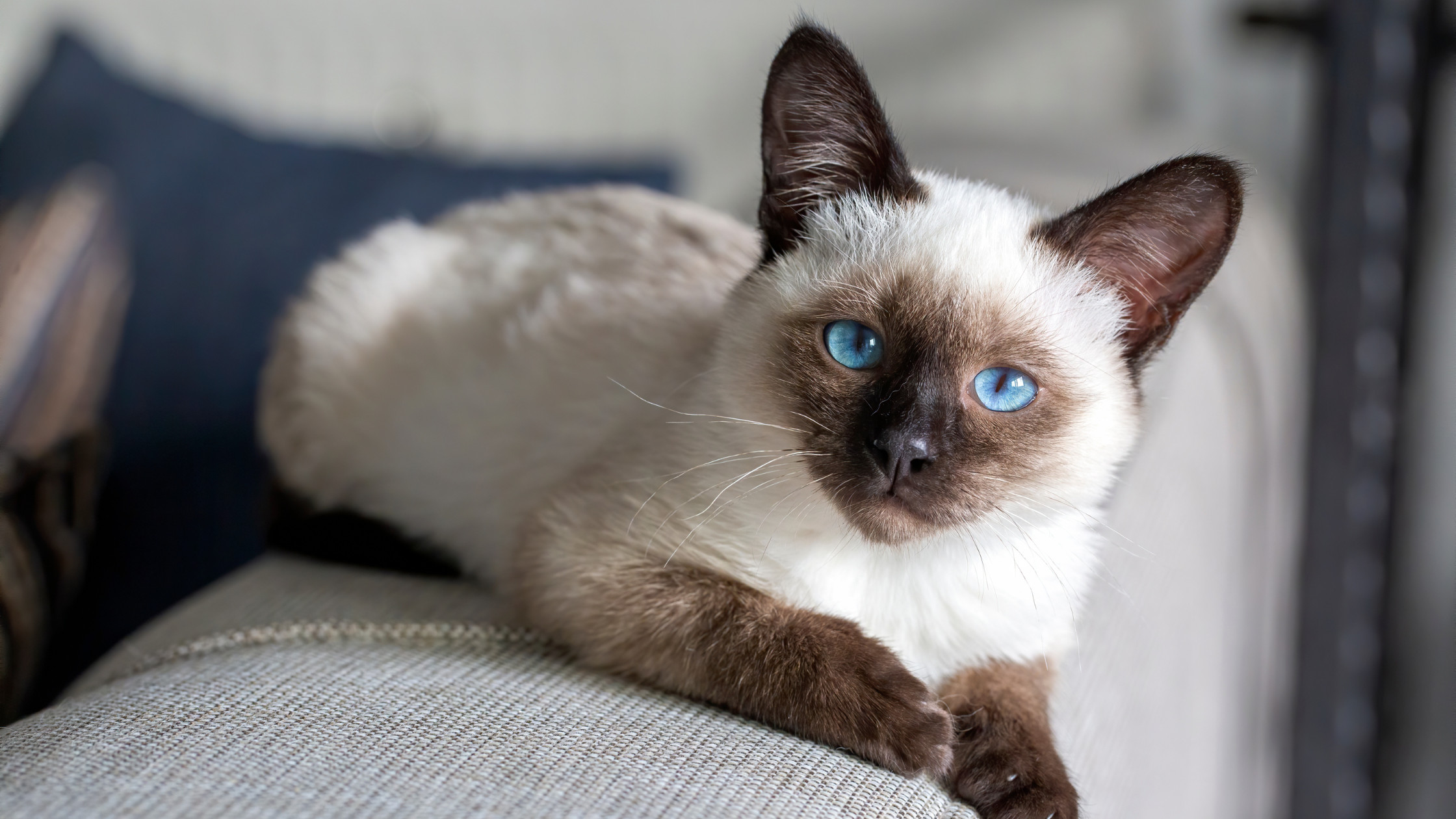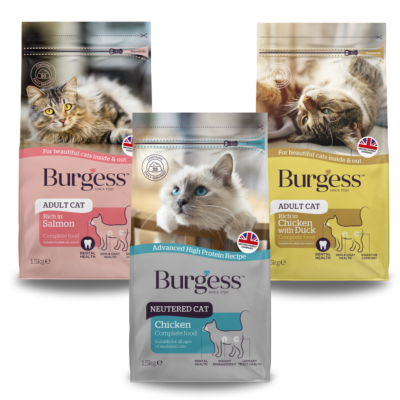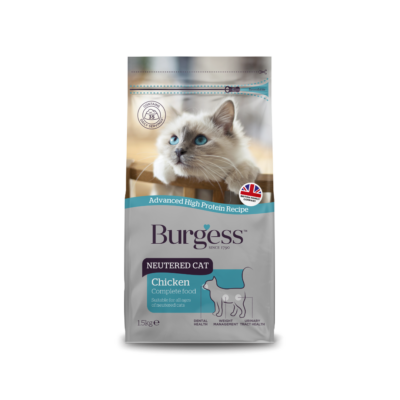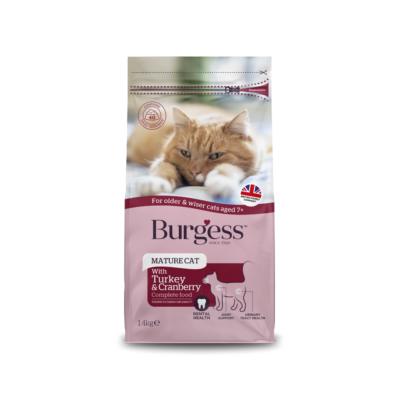

Expert approved
With their long, slender, sinuous bodies, sleek fur, distinctive colouring and bewitching blue eyes, Siamese are stand-out cats.
“Be prepared, as your life will never be the same again once you open your door – and your heart – to a Siamese!” enthuses Your Cat. “Owners and breeders of this loud and loveable breed cannot speak highly enough of them and promise that while a Siamese will change your life, it will certainly be for the better.”
“Siamese are graceful, lively, long, slender, strong, muscular, demanding, talkative, and very intelligent,” says The International Cat Association (TICA). “They are very social, and people oriented. They must have people around to thrive.”
WHAT DO SIAMESE CATS LOOK LIKE?
The Governing Council of the Cat Fancy (GCCF) describes the Siamese as well-balanced and athletic: “The Siamese is a medium-sized cat with a long, lithe body that is graceful and elegant but still has a muscular feel. They should feel much heavier than they appear. The legs are slender, and the paws are small and oval. The tail is long and tapering.”
With a short coat that is fine in texture, the Siamese is instantly recognised by its markings. The GCCF says: “The most recognised features of the Siamese cat are the coloured points seen on the mask (face and ears), limbs and tail and their mesmerising blue eyes. Together with large ears, the coloured points and blue eyes create the unique look or essence of the breed.”
And, when it comes to coat colours, there’s a huge variety. The GCCF lists 32 colours and points patterns, including seal, blue, chocolate, lilac, cinnamon, caramel, fawn, apricot, red and cream, along with tabby, tortie and tortie tabby points.
WHERE DID SIAMESE CATS COME FROM?
Named after their country of origin, Siam (renamed Thailand in 1939), the enigmatic Siamese cat radiates an aura of mystery.
“The actual origins of the Siamese have been lost, but it is fairly certain that it is Eastern in origin. Manuscripts from Ayutthaya, the ancient capital of Siam, record native cats,” notes TICA.
“They are a natural breed and cats with their distinctive pointed pattern of dark mask, ears, legs and tail contrasting with a paler body and with deep blue eyes, have been known for centuries and are derived from the Thai or Wichien Maat, an old cat breed,” adds the GCCF.
The first Siamese cats to appear in the UK were a breeding pair named Pho and Mia, who arrived in 1884 as a present for Lilian Gould from her brother, who was the British Consul-General in Bangkok. When first exhibited in Victorian England, they were known as ‘Royal Cats of Siam’ as it was believed they were kept by Siamese royalty. Lillian Gould went on to co-found the Siamese Cat Club in 1901.
Read on to find out more about Siamese cats. Are they demanding? Are they good with children and other pets? What do Siamese cats like to do? From grooming and playtime to feeding, find out how to provide Siamese cats with everything they need to live a fulfilling and happy life.
But first, check out these Siamese cat facts!
7 SENSATIONAL SIAMESE CAT FACTS
- Siamese cats are medium in size. Adult females weigh between 8 to 12 pounds (3.6 to 5.4kg) and adult males 10 to 15 pounds (4.5 to 6.8kg).
- Siamese kittens are born light cream or white, and the points colour starts to develop after a week or two.
- Siamese cats have a curious genetic mutation, which affects enzymes that control the colour of their fur. Areas of the body that are cooler allow the enzymes to function, and they develop more pigmentation. So, in cold climates, a Siamese cat’s fur will be darker on its body than that of a cat living in a warm climate.
- Siamese cats have an ancient heritage – they are described and illustrated in the Tamra Maew book of cat poems, written between the 14th and 18th centuries, copies of which are still kept in the National Library of Thailand.
- Siamese cats have one of the longest lifespans, which can be between 15 and 20 years.
- Siamese cats are sometimes called ‘meezers’. This nickname comes from their unique, loud, low-pitched meow, which sounds like ‘meez’.
- Siamese cats are loved by the camera and have appeared in a number of movies. These include The Incredible Journey (Tao the Siamese cat joined Luath the Labrador Retriever and Bodger the Bull Terrier on their 300-mile trip), The Secret Lives of Pets 2 (a Siamese kitten with dog-like ways ends up in the puppy class), and Disney’s 1955 film Lady and the Tramp, which features Si and Am, a pair of Siamese cat sisters, who love causing mischief.
SIAMESE CAT PERSONALITY PROFILE
If you’re looking for an outgoing, social cat that’s not shy to ask for attention and is affectionate yet independently minded, then a Siamese could be your ideal feline friend.
“Welcoming a new Siamese cat into your home is a wonderful experience. Despite their perceived ‘regal’ appearance, their playfulness means they love to ‘chat’ with their owners. They’ll meow, purr, chirrup and make any noises they can to get your attention,” says Petplan.
“They will ‘talk’ to you all day and night, expressing their opinion on everything and demanding attention,” adds TICA.
“If you believe cats are quiet and stick mostly to themselves, prepare to be astonished. Siamese cats are regular ‘Chatty Cathys’ and enjoy nothing more than to tell you about their day,” says dedicated Siamese cat mom Lydia Irene on Pet Helpful. “They genuinely love the sound of their own voices. The good thing about this is that you will always have someone to ‘talk’ with.” However, she also notes: “The Siamese caterwaul is very loud, especially if they really want something.”
Siamese cats bond strongly with their owners and are also noted for their intelligence and dog-like ways.
Ross Davis of the Siamese Cat Association states: "They are more intelligent than most other breeds – they are very outgoing and friendly and love human company. They're very doglike and will even play fetch with you!"
Your Cat also comments on this breed’s mischievous streak: “While Siamese are very affectionate lap cats who enjoy having cuddles, they are also one of the liveliest (and nosiest) breeds. They can open doors, drawers and even windows.” Apparently, Ross Davis has taken to putting child locks on his cupboards to keep out inquisitive Siamese noses!
A good fit for families
“The active and social Siamese loves people of all ages, including children, cat-friendly dogs and other cats,” says TICA. “They thrive on attention and affection and are often found beside their humans. Siamese like to be ‘helpful’ and follow family members around throughout the day. They love warm places and can be typically found sitting on their humans’ laps during the day and snuggling under the covers with family members at night.”
The organisation advises that the loyal and loving Siamese will “pout and pine if given little or no attention and therefore are best suited for families who enjoy spending time and interacting with them on a regular basis.”
“Due to their intelligence, energy and loyal temperaments, Siamese cats are often likened to dogs. However, despite their affectionate nature, Siamese cats, like other felines, need plenty of space and are much more independent than their canine counterparts,” adds Petplan. “As with lots of other cats, it can take a Siamese cat time to warm up to strangers. As they warm up to you, they’re goofy, friendly, energetic and loving.”
Understand your cat better with our cat communication guide >>
IS MY HOME SUITABLE FOR A SIAMESE CAT?
If there’s someone around most of the time and you have a household of people who enjoy thinking up novel ways to keep an active, energetic, intelligent cat entertained, then a Siamese will fit right in with your family.
“The Siamese is the perfect pet for someone who wants lots of interaction and activity. They are wonderful with children and other pets. They are very loving, loyal, intuitive, demanding and social,” says TICA.
“They will live happily with a family dog and older children,” notes Your Cat.” Siamese cats make good family pets, and they tolerate dogs and children well if they’re introduced carefully at a young age,” adds Petplan.
What won’t suit them, is a home where they are left alone for much of the day.
“A Siamese is not an ideal cat for someone out at work all day, as they do not like to be left on their own, but this can be overcome by having two Siamese,” advises the GCCF. “Consider buying or adopting two Siamese cats at the same time, ideally from the same litter,” suggests Petplan.
Siamese cats also want a home where humans are always up for a game when required, but there are some safe, quiet spaces to enjoy some time out.
“To avoid anxiety and frustration, it’s a good idea to spend time playing games with your pet to keep them mentally stimulated,” advises Petplan. “This breed bonds strongly to their human owners and loves interacting with them, but it’s good for your cat to have their own space when they need it, whether it’s on top of a cat tree or a special spot on the sofa.”
Think about your cat’s safety and security
The insurer also notes that security needs to be considered, advising: “Siamese cats’ beauty and their financial cost mean they are a target for thieves. However, they don’t really like being inside and need a lot of exercise, so some owners may prefer to offer supervised outdoor access or an enclosed cat-safe garden.”
Some people think that, because of their short, fine coat, Siamese cats can be a good option for allergy sufferers. However, this breed still sheds dander (microscopic flakes of dead skin) and so cannot be considered 100% allergenic. Petplan says: “It's wise to spend some time with a new cat before bringing them home to confirm no one is allergic.”
How cat friendly is your home? >>
WHAT DO SIAMESE CATS LIKE TO DO?
While every cat is an individual with a unique set of likes and dislikes, there are certain things that are extremely important to Siamese cats.
Top of the list are fun, intriguing toys that stimulate both the mind and body of these smart, energetic felines.
“They are highly intelligent and need to be kept amused,” advises the GCCF. “Toys and scratching posts should be provided for their amusement, and they can be taught to retrieve toys.”
“Siamese cats require a lot of interactive cat toys, cat games and human interaction to keep them happy,” adds Petplan. “They’re so smart that they can get a little depressed and may exhibit unwanted behaviours, such as destructiveness, if they’re alone with nothing to play with. Ensure that you utilise puzzle feeders and rotate toys regularly, so they do not get bored.”
“They are great jumpers and love heights, so perches and cat trees should be provided,” says TICA. “When left alone, Siamese cats have been known to entertain themselves for hours by turning on faucets, opening cabinets, seeking out new hideaways and watching television. They have been known to play fetch as well as any Retriever. Keep your Siamese entertained and out of trouble by providing puzzle toys that require them to think and move to release treats or use a clicker to teach them tricks, such as tossing a small ball to fetch or running an agility course.”
“Because this breed can easily get bored, you’ll need to make sure you buy them lots of toys, a scratching post, and some cat-climbing furniture,” adds Lydia Irene. “They sometimes make up their own games and love to climb. They have been known to hide on top of the refrigerator or a shelf and pounce on passers-by.” You have been warned!
GROOMING YOUR SIAMESE CAT
With their short, fine coats, Siamese cats take care of most of their grooming themselves, only requiring a little help from their human.
“The Siamese cat’s short glossy coat does not require excessive grooming, but the cat will enjoy the attention gained from being groomed. As with most shorthair breeds, the cats look after their coat very well,” says the GCCF.
“This breed’s short fur means they don’t need daily grooming. You should still comb their coat, brush their teeth and check their ears weekly. Use this opportunity to generally check your Siamese cat’s health and bond with them,” advises Petplan.
It’s a good idea to gently introduce grooming to your cat when they are a young kitten, so they gradually get used to it and learn to enjoy the experience. Regular grooming is not only great for bonding, but enables you to see any irregular lumps, bumps, bites and scratches.
FEEDING YOUR SIAMESE CAT
All cats – from tiger to domestic tabby – are obligate carnivores, which means they must eat meat to survive. Meat contains essential amino acids which they can’t make themselves. Cats also require high levels of protein and can benefit from food that’s appropriate for their life stage.
Industry body UK Pet Food states: “Cats vary from many species, requiring a significant amount of protein in their diet, plus certain nutrients, such as taurine, as part of a balanced diet with just the right amount of fats, carbohydrates and essential vitamins and minerals, to stay in peak condition. Nutrients must be present in the correct amounts for their stage in life and in the correct proportion to each other, in order to provide a nutritionally complete and balanced diet.”
A cat with a big appetite
“Siamese cats are naturally very energetic and muscular. They often have big appetites and can ask for food multiple times a day,” notes Petplan. “Choosing a complete, balanced diet which is based on the appropriate life stage of your Siamese cat is important.”
Burgess in-house vet Dr Suzanne Moyes MVB, MRCVS advises: “Along with high protein levels, cats require a careful balance of vitamins, plus the essential amino acid taurine necessary to promote a healthy heart and eyes. A complete diet will have all the necessary vitamins, minerals, essential fatty acids and amino acids in the right ratio.”
How much and how often should you feed your cat?
Adult cats are generally fed twice a day. Alternatively, as cats in the wild naturally eat lots of small meals per day, you could try splitting their daily intake into several small meals (unless advised otherwise by your vet). Providing dry cat food in a variety of ways, such as in treat balls or cat puzzles, can deliver a much more exciting and rewarding experience for your cat.
Portion control is also important, so get into the habit of measuring out accurate amounts each day. Giving your cat a little more than they need means they could become overweight. “Their natural chattiness can be perceived as them asking for more food. Resist the temptation to overfeed your Siamese cat,” says Petplan. “Keep their food bowl away from their water bowl to encourage them to drink, and always feed the recommended amount on the food packaging.”
Likewise, if you don’t feed enough, your cat will not get all the nutrients they need and will become underweight. Petplan advises: “A Siamese cat’s naturally slender and elongated frame and their sleek coats mean they can be wrongly seen as ‘skinny’ and needing to be fed more. If you are worried about your cat's weight, or have noticed a change in their frame, it's important to seek advice from your vet.”
Dr Moyes adds: “By following the on-pack instructions, it’s easy to measure out exactly the right-sized portion that’s suitable for your cat’s age and lifestyle to ensure they consume the correct amount of nutrients. For instance, house cats may need fewer calories than cats who spend much of their day roaming outdoors. Dry cat food is a good option as it’s easily portioned, may be better for dental health and encourages extra water consumption.”
Wet food v dry food
Unlike wet cat food, dry cat food stays fresh inside the pack until you’re ready to serve it to your cat. And that’s not all! Other benefits include:
- Free feeding – As dry food can be left out because it won’t spoil, this suits those cats who prefer to graze their food over the day rather than at specific mealtimes.
- Helpful for healthy teeth – Munching on crunchy kibble encourages chewing and helps to keep teeth clean. Petplan says: Like most breeds, Siamese may suffer from gum and dental disease during their lifetime. This condition can be prevented with basic routine care, such as feeding cats dry food and brushing their teeth, helping them to lead a normal, pain-free life.
- Makes feeding more fun – Dry food is easier to use with food dispensers and puzzle toys, providing environmental enrichment and mental stimulation.
- Portion control – By following the on-pack instructions, it’s easy to measure out exactly the right-sized portion to help your cat maintain a healthy weight.
Make sure to supply plenty of fresh water, too, in a separate place from their feeding area. Lots of cats aren’t keen on drinking water from a bowl, preferring moving water to still – so it may be worth investing in a cat fountain if you don’t want them drinking from a dripping tap!
GETTING A SIAMESE CAT
If you’re interested in adding one of these fabulous felines to your family, find out as much as you can first and decide if you’ll be able to provide them with everything they need to be a truly happy and contented cat.
“If you’ve never owned a cat before, it’s important to do lots of research before committing to bringing your Siamese cat home,” advises Petplan. “The more preparation you do, the better you can meet your pet’s needs.”
If you’re looking for a kitten, only ever buy from a reputable, registered breeder. Be aware that Siamese cats are slightly more prone to certain health conditions than other cat breeds, including conditions of the kidney and liver, and can carry a gene that leads to a form of heart disease called HCM (hypertrophic cardiomyopathy). While this condition is not curable, it can be treated with lifelong medication.
Alternatively, visit the North of England Siamese Rescue and The Siamese Cat Welfare Trust Facebook page to find beautiful cats looking for happy new homes. Also check out other rescue charities such as Cats Protection, Battersea, Blue Cross, RSPCA and Woodgreen, who’ll be delighted to hear from you, and can provide you with lots of helpful advice on adopting a rescued cat.
EVERY CAT DESERVES A DELICIOUS, NUTRITIOUS DINNER!
At Burgess Pet Care, all our cat food is made using premium ingredients to ensure excellent quality and superior taste to help keep your cat happy and healthy – from kitten, to adult and mature and Burgess Neutered Cat with Chicken – an advanced, high protein, complete food with added L-Carnitine to help maintain a healthy weight.
- Salmon? Duck? Chicken? Let your adult cat pick their favourite flavour with our fussy cat bundle >>
- Our cat diet and nutrition guide is here to help you create a meal plan that's tailored especially for your feline friend.
- How often should you feed your cat? Find out why little and often suits most cats – and the reason why play should be part of your feeding routine.
- Adapting your cat’s diet throughout their life What you choose to feed your cat can make all the difference.
CARE MORE Find out more about caring for your cat from Burgess, the Pet Care Experts.
Is your cat a Burgess cat? Join our Pet Club for exclusive offers and competitions – and expert advice from our in-house vet, Dr Suzanne Moyes.
If you found this interesting, you may also like:
CARING FOR KITTENS Discover how you can help your kitten get the very best start in life.
KITTEN TIMELINE – WHAT ARE YOUR KITTEN’S MILESTONES? When will my kitten eat solid food? When will my kitten start to purr? When will my kitten be able to go outside? Mark your meowing munchkin’s milestone moments with our comprehensive kitten timeline.
THE NEXT BIG STEP FOR YOUR LITTLE CAT When does your kitten become a cat? What changes will you see in their behaviour? When do you need to switch them over from kitten to adult cat food – and what are the nutrition differences that benefit them as they grow?
CATS – WHAT’S GOING ON DURING THE ‘TEENAGE’ PHASE? Is your young cat suddenly bursting with energy, wanting to play at weird times, and fiercely guarding their favourite hang-out spots before going off in a huff? It’s likely you have a ‘teenage kit’ on your hands.
A LITTLE EXTRA HELP FOR OLDER CATS When our beloved cats get older, it’s our job to make their life as comfortable as possible. Their fast-paced days of crazy kitten antics may be a distant memory, but they still possess the desire to exhibit their natural feline behaviours – they just need a little help from us.
CAN YOU TRAIN A CAT? Felines excel at training their human guardians to give them food, attention and a cosy lap to curl up on. But is it possible for us to train them?
ALL ABOUT RAGDOLL CATS Gentle, genial and generally laid-back about life, Ragdolls are the perfect choice if you long for a large, fluffy cat who will follow your every move and may even hide ‘finds’ in your shoes...
ALL ABOUT MAINE COON CATS Playful, loyal and surprisingly placid, Maine Coons make excellent companions for people who want to share their days with a big, furry cat with a gentle, affectionate nature.
ALL ABOUT BENGAL CATS Are Bengals friendly and affectionate? Are they active and playful? Do they really have glittery fur? Get all the answers in our guide to beautiful Bengal cats.
ALL ABOUT NORWEGIAN FOREST CATS Do Norwegian Forest cats need lots of space to play and explore? Are they affectionate lap cats or do they have a more independent nature? Find out in our guide to these fabulously fluffy felines.
ALL ABOUT BRITISH SHORTHAIR CATS Gentle, affectionate and independent, discover why super popular British Shorthairs have just what it takes to be the ideal family cat.
CAT BREEDS – TAKE A CLOSER LOOK AT SOME OF THE UK’S MOST POPULAR TYPES OF CAT Siamese or Bengal? Norwegian Forest or Maine Coon? Ragdoll or Russian Blue? Which breed of cat do you find most captivating? We count down 10 cat breeds that are riding high in the popularity charts, plus one favourite feline that’s not actually a breed at all…
PLAY WITH THIS – NOT THAT! HOW TO CHOOSE THE BEST CAT TOYS Cats love stalking things, chasing things, and exploring things with their paws and teeth, which can sometimes lead to a whole mess of trouble. Introducing a selection of feline-friendly toys will keep your pet entertained while ensuring they won’t come to any harm.
HOW TO HANDLE YOUR CAT Cats like to feel in control of whatever situation they’re in and are quick to show when they’re not happy. Never is this more evident when it comes to being handled when they don’t want to be.
DOES YOUR CAT KNOW THEIR NAME? Whatever name we choose to bestow upon our beloved pet cats, does it make any difference to them? Do they actually understand that they’re called Alfie or Bella or even Archibald von Snugglemuffin?
ARE YOU AND YOUR CAT MORE ALIKE THAN YOU THINK? If you have a grumpy Tabby cat, a super friendly Ragdoll cat, or fiendishly feisty Bengal cat, could this actually say more about you than your pet?
10 THINGS I HATE ABOUT YOU Super tidy house? Cleaning blitzes? Cuddle overload? If our feline friends could tell us what they really think, here’s what they’d probably say about some of the things we do that they’re none too happy about…
WHEN SHOULD YOU NEUTER YOUR CAT? As well as preventing unwanted pregnancies, neutering benefits your favourite feline’s health and wellbeing in all sorts of ways. In fact, feline experts believe it’s the kindest thing you could do for your cat.
HOW TO TELL IF YOUR CAT REALLY LOVES YOU While you may adore your captivating cat, how does your enigmatic feline companion feel about you?
MUSIC TO THEIR FURRY LITTLE EARS? What’s on your playlist? Cat Stevens? The Stray Cats? The Pussycat Dolls? And have you ever wondered if your cat appreciates your taste in music, or would they prefer music created especially for them? Yes, it’s a thing!
PLAY BEHAVIOUR OF CATS SURPRISES SCIENTISTS While there are lots of things that cats do which cause scientists plenty of head-scratching moments, new research into the way that cats play has resulted in some rather baffled boffins...
THE EYES HAVE IT When it comes to the mysterious task of understanding cat language, focusing on one of a feline’s most appealing features – their captivatingly beautiful eyes – could be the key.
SHOULD LILIES CARRY A HEALTH WARNING? Did you know that lilies are so poisonous that a cat can suffer fatal kidney failure just from nibbling a leaf, licking pollen off their coat or even from drinking water from a vase with cut lilies in it?
DOES YOUR CAT RECOGNISE YOUR HAPPY FACE? How do cats see humans? Do cats recognise faces? Do cats remember people? Do cats miss their owners? Do we own cats or do cats own us?
IS YOUR CAT REALLY MAD AT YOU? Whether it’s because you’ve had to take them to the vet, or you accidentally stepped on their tail, your cat may give you the impression that they’re really cross with you. But can cats really hold grudges?
MY CAT IGNORES ME – WHY? Unlike dogs, who generally want to be involved in every situation, cats are known for being independent. While some cats can be quite social, it can be hard to take when your favourite feline seems to take absolutely no notice of you. So why is this the case?
GIRLS V BOYS – FELINE MYTHS AND MISCONCEPTIONS Do male and female cats act differently because of their gender? Are generalisations about laid back, lap-loving boys and aloof, independent girls simply myths – or is there any truth to them?
THE HOMING INSTINCT – CAN CATS REALLY FIND THEIR WAY HOME? Top tip – it’s much easier if they’re microchipped! Plus, what a change in the law means for every cat owner…

















